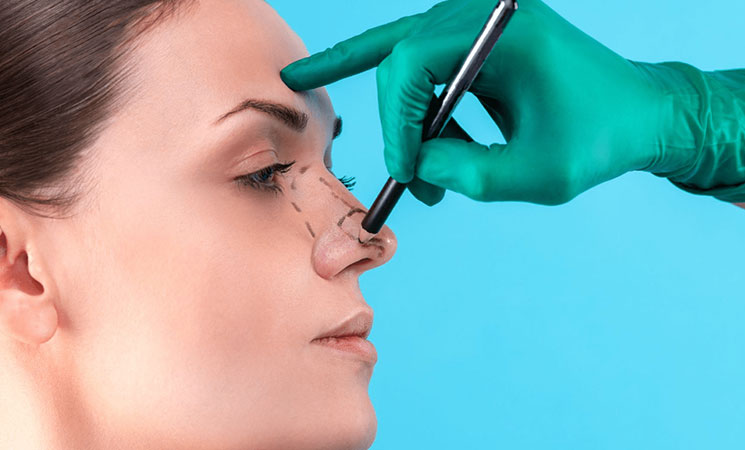Rhinoplasty can change the way your nose looks or how it fits with your other facial features. It is also used to correct structural issues that affect breathing. If you want to undergo this cosmetic surgery, it’s helpful to know what to expect during the surgery. Here is more information about the procedure and how to prepare for it:
What Rhinoplasty Does?
Rhinoplasty, also referred to as a nose job, is a surgical procedure that changes the shape of the nose. This procedure can be performed for cosmetic reasons to alter the size or shape of the nose or correct asymmetry in the facial features. A doctor may recommend rhinoplasty to remove a bump or hump from the nose or to repair issues from an injury or birth defect.
Along with cosmetic changes, rhinoplasty can also improve the function of the nose. It resolves breathing issues caused by deviated septum or sinus problems. In these cases, the surgery is referred to as a functional rhinoplasty. Whether it’s a functional or cosmetic surgery, rhinoplasty affects the bone, cartilage, and skin of the nose. An experienced plastic surgeon will take steps to preserve these tissues and create optimal results.
How To Prepare for Rhinoplasty?
After you make the decision to have a rhinoplasty and find a reputable surgeon, you’ll meet for a consultation. The surgeon will determine if you’re a good candidate for the surgery based on your medical history and a physical exam. They will discuss your goals for the procedure compared to what can be reasonably expected. Based on this information, the surgeon will determine if you will require an open or closed rhinoplasty. They will also answer any questions you have about the procedure, recovery time, or the results.
To protect your safety, the surgeon will instruct you to find someone to drive you home after the procedure. This surgery is usually performed in an outpatient setting under local anesthesia with sedation or general anesthesia. The anesthesia delivery method depends on the complexity of the surgery and the doctor’s recommendation.
What Happens During Surgery?
Once the anesthesia is in effect, the surgeon will make an incision under the nose between the nostrils to begin an open rhinoplasty. The incision is small to encourage minimal scarring. With a closed rhinoplasty, the surgeon goes into the nose before making an incision. This method is used when the surgeon needs to straighten the wall between the two sides of the nose. A misaligned nasal wall, known as a deviated septum, reduces airflow through the nose, making breathing more difficult.
During the procedure, the surgeon will adjust the cartilage and bone within the nose. They may add cartilage to provide symmetry to the two nostrils. If only a small amount of cartilage is needed, the surgeon can take it from the ear or deeper in the nose. They use a rib or other bone tissue if a larger amount of structural cartilage is needed. Only small changes are made during a rhinoplasty, but they have a significant impact on your nose’s appearance and functionality. The surgeon will tailor the surgery to the unique needs of each patient to achieve ideal results.
What To Expect During Recovery
Once the surgery is finished, you’ll spend some time in a recovery room until you awake and the anesthesia is out of your system. Surgical staff will monitor you until you’re stable enough to leave. Once you’re at home, you’ll spend the next few days resting. Expect some swelling and bruising for several days after the procedure. This may keep you from seeing the complete results of the cosmetic surgery, but it should improve over time. As the swelling subsides and the nose returns to a normal color, you’ll be able to see the structural differences and how they complement the rest of your features.
In some cases, patients return to normal activities after the first week of recovery. You may still have some activity limitations, such as avoiding heavy lifting and bending. All restrictions are usually removed after two to four weeks. The surgeon will schedule a follow-up appointment to monitor the healing of the incision and swelling. This allows them to asses the success of the procedure and recommend further recovery tips if needed.
Explore Your Cosmetic Surgery Options
If you are interested in a rhinoplasty, consult with an experienced plastic surgeon who has performed numerous procedures. These professionals will recommend the most suitable procedure options for your cosmetic and functional goals. Make a list of questions you want to ask in your consultation to make sure you feel confident about moving forward with the surgery. Contact a reputable cosmetic surgeon today to learn more about their services or schedule a consultation appointment.











